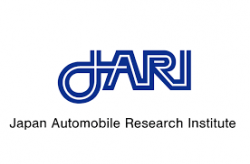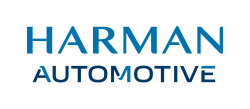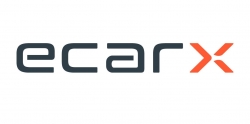2025 Preliminary Program
Click on the sessions below to see topics and speakers.
Day 3: Thursday, May 22
Room 1
Developments in scenarios, simulation, validation and in-the-loop testing (continued)
09:00 - 15:00
Efficient mining of relevant scenarios from data collection to processing
 Steffen Metzner
Steffen MetznerGlobal product manager
AVL List GmbH
Austria
High-quality data collection and selection are the cornerstones of ADAS and autonomous driving development. This presentation explores key prerequisites for successful test drives on public roads, focusing on ensuring data completeness, consistency and relevance. Topics include reference sensor calibration, field-of-view simulation and real-time diagnostics. Additionally, the presenter will discuss strategies for selecting relevant data during collection and after ingesting with pre-selection algorithms to optimize storage and processing. Attendees will gain practical insights to overcome technical challenges and streamline the data pipeline for cost-sensitive system performance.
What the audience will learn
- Techniques for ensuring data completeness and consistency during test drives
- Best practices for reference sensor calibration and integration
- Strategies for real-time diagnostics and time synchronization
- Approaches to selecting relevant data during collection and after ingesting for pre-selection
- Solutions for fleet-wide data handling and post-drive analysis
AI-centric AVs – training, V&V and scenarios, all together
 Gil Amid
Gil AmidChief regulatory affairs officer
Foretellix
Israel
Autonomous driving implementation continues its shift to use AI technologies. These technologies require new capabilities for the development and validation of the AV software. The presentation introduces key challenges and presents solutions for a data-driven autonomy development toolchain. The solutions enable both training and V&V, using real-world data, synthetic scenarios and abstraction to enable large-scale, productive development and V&V.
The importance of quality and quantity analysis for ADAS/AD product development
 Jura Ivanović
Jura IvanovićProduct director, logiRECORDER automotive HIL video logger
Xylon
Croatia
 Jens Hedrich
Jens HedrichEngineering project manager and product manager
ZF Group
Germany
Future mobility solution development requires a high volume of data to be analyzed for both quality and quantity. ZF Group and Xylon are providing off-the-self solutions. Quantitative data analysis of ADAS/AD systems require precise and reliable annotations. ZF Annotate is a state-of-the-art AI-powered ADAS/AD perception validation solution that saves time and costs. ZF Visual is an ADAS/AD data analysis software with a strong focus on visualizations. It provides engineers with deep data insights throughout the complete development cycle. The Xylon logiRECORDER can fulfill the challenging demand of collecting high bandwidth data while showing live data at the same time.
What the audience will learn
- How ZF Group ensures a safer and smarter driving experience
- Benefits of state-of-the-art AI-powered ADAS/AD perception validation
- How engineers get deep data insights and quickly assess performance
- How ZF Group software solutions allow OEMs to close the validation
- How Xylon dataloggers support comprehensive ZF software tools
vISP-in-the-loop: developing better perception stacks through cloud-to-car environmental parity
 Guilherme Marshall
Guilherme MarshallADAS Go-to-Market Director
Arm
UK
 Martin Kollenrott
Martin KollenrottWorldwide tech lead for autonomous mobility
AWS
Germany
Increasing levels of driving automation in more complex ODDs demand effective ways to continuously develop and verify software across millions of virtual miles and thousands of driving scenarios. As a result, scalable MLOps and DevOps have become the engineering foundations underpinning those at the leading edge of AD technology. In this presentation, Arm and AWS join forces to discuss how cloud-to-car environmental parity can enable better testing coverage and faster time-to-market across the industry. Based on a practical SOAFEE-based case study, the presenters will explore the impact of adding the image signal processor (ISP) model into the virtual perception pipeline, and how a similar methodology can benefit OEMs, Tier 1 suppliers and AD software vendors.
What the audience will learn
- The pros and cons of different virtual ECU abstraction levels
- The advantages of cloud-to-car environmental parity for software development and verification
- Why images tuned for human vision may not yield best results for compute vision
- The importance of integrating a virtual model of the ISP into both AI training and testing stages
Distibuted versus centralized architectures for AD data acquisition
 Adrian Bertl
Adrian BertlStrategic product manager
b-plus technologies GmbH
Germany
The presentation gives current insights into efficient data acquisition for ADAS and autonomous driving ECUs and how this benefits from a modular approach, enabling these setups to be reused for the next generation. It focuses on hardware and software mechanisms to tap out data during a test drive or on HIL benches. It also covers the decoupling of ECU internals with breakout boards, PCI Express as an alternative to ethernet when transferring data, and the advantages of decentralized setups. An architecture with an interface to simplify the integration of chip vendor or – in general – specific libraries, for example, bus simulation for diverse test scenarios. These design principles support precise and efficient data collection in increasingly complex systems.
What the audience will learn
- Advantages of both distributed and centralized logging
- PCI Express as a measurement interface for domain controllers
- Standards for ethernet as ASAM CMP and MDF4
- Software integration approach into a logger for vendor-specific software blocks
Panel Discussion - Scenarios : the ultimate challenge for standardisation
 Dr Benazouz Bradai
Dr Benazouz BradaiR&I director - master expert in ADAS/Autonomous Driving
Valeo
France
 Jordi Pont Rañé
Jordi Pont RañéPrincipal project engineer
Applus Idiada
Spain
 Eric Vaillant
Eric VaillantExpert leader testing & measurement technology
Renault
France
 Hiroki Nakamura
Hiroki NakamuraResearcher
Japan Automobile Research Institute
Japan
Marc Pajon, consultant, TAKTECH SAS, France
AI-powered tools for autonomy
 Jake Lussier
Jake LussierLead, product management
Applied Intuition, Inc.
USA
This presentation will provide insights into how AI is transforming the landscape of AD/ADAS and autonomy development. It will discuss emerging industry trends, such as the rising complexity of L2+, L3, and L4 ADAS systems and the growth of E2E ML-based architectures that necessitate new tooling solutions. It will highlight key AI technologies, including LLMs, neural reconstruction, sensor diffusion and world models, and illustrate how these can be leveraged to create innovative AI-powered interfaces and simulators that promise to be both scalable and closed loop. The benefits that these AI-driven advancements can bring to OEMs and suppliers will also be discussed.
What the audience will learn
- Recent trends in AD/ADAS that require novel AI solutions
- Relevant emerging AI technologies
- New opportunities for AI-powered interfaces
- New opportunities for AI-powered simulators
- Benefits to OEMs and suppliers
Integrating VR and CARLA for realistic vulnerable road user simulations
Senior researcher
Virtual Vehicle Research
Austria
Driving simulators often struggle to accurately simulate vulnerable road users (VRUs) in safety-critical scenarios. We present a framework integrating immersive virtual reality and human motion capture with the CARLA driving simulator. This setup allows simulations where real human agents act as VRUs interacting with an AI-equipped ego car featuring advanced ADAS functions. It enables testing and validation of new ADAS features with real pedestrian behaviors, providing valuable data on VRU reactions in dynamic traffic environments. This approach enhances the realism of VRU simulations and supports the development and evaluation of safer, more effective ADAS technologies for real-world applications.
What the audience will learn
- An overview of SOTA driving simulators and their limitations, covering the behavior of vulnerable road users in dynamic traffic environments
- The capabilities of the framework that integrates the CARLA simulator with the VR Meta Quest Pro headset, involving real human agents as pedestrians
- The application domains and the use cases of the proposed VR+CARLA simulation framework
Room 2
Safety innovations and best practices for their development and deployment (continued)
09:00 - 12:00
Context-aware ADAS: unlocking safer driving with interior sensing
 Amit Bhandare
Amit BhandareProduct manager - interior sensing systems
Magna
Germany
Interior sensing is transforming ADAS by providing critical real-time insights into driver attention, occupant behavior and in-cabin environments. Traditionally, ADAS has relied on external sensors like lidar, radar and cameras to monitor road conditions. However, the integration of interior sensing – such as driver monitoring cameras (DMC), interior radars and sensor fusion – is enhancing decision-making for ADAS in several ways. Driver state monitoring (DSM) helps ADAS assess drowsiness, distraction and cognitive load, enabling adaptive interventions. Occupant monitoring detects seatbelt use, passenger presence and postures to optimize airbag deployment and crash response. Sensor fusion enables context awareness.
What the audience will learn
- What insights driver state monitoring and occupant monitoring can provide
- How interior sensing will enhance decision-making in ADAS
Data visualization for automotive
 Unmendu Senapati
Unmendu SenapatiProduct manager
Robert Bosch
Germany
Data visualization for an automotive presentation: the key is to abstract complex information into easily understandable graphics that convey insights quickly. The presentation offers a breakdown of how to approach data visualization in the context of the automotive industry, focusing on key areas such as production, sales, quality control and innovation.
What the audience will learn
- Usage inside autonomous driving
- Why data visualization matters for automotive design
- What to look for in data visualization tools
- Examples of data visualization
- Best practices for data visualization in automotive design
AI-enabled occupant safety, comfort and health
 Kaustubh Ashok Gandhi
Kaustubh Ashok GandhiSenior product manager, Ready Care, SBU intelligent cockpit
Harman International
Germany
This presentation will cover the recent progress in in-cabin sensing, which goes beyond traditional driver monitoring systems, showing how it enables advanced occupant safety, comfort and health. Considering EU-NCAP's recent introduction of safety rating parameters, we will showcase relevant features, including occupant detection, localization, type classification and seatbelt use, in conjunction with real-time contactless vitals and face recognition promoting holistic passenger well-being and personalization on the go. This presentation will cover in-cabin use cases that enhance the consumer experience, required sensors like camera and radar, software elements and deployment channels that allow car manufacturers additional monetization opportunities by leveraging the hardware used for regulatory compliance.
What the audience will learn
- Enhanced occupant safety: understand recent progress in in-cabin sensing features and get insights into the near-term future
- Leverage AI and ML: learn how AI and ML can enhance the capabilities of in-cabin sensors beyond classical approaches
- Comfort and health monitoring: get insights into how real-time contactless vitals and face recognition reinforce holistic well-being and personalization
- Consumer delight and monetization: find out how to monetize already available (required) hardware while enhancing user experience
- Regulatory compliance: learn how to futureproof in-cabin architecture design in light of evolving regulatory compliance requirements
Revolutionizing automotive agility: building agile vehicles 'faster, smarter, and customer-centric'
 Areeg Hassan
Areeg HassanR&D operations manager
Valeo Detection systems GmbH
Germany
Agile methodologies are increasingly important in the automotive industry due to the market's evolving needs and challenges, such as the rise of software-driven innovation and shorter development cycles. Applying Agile methodologies to large-scale automotive projects requires tailoring practices to accommodate the complexities of automotive environments. OEMs can build an Agile approach by adopting a Scaled Agile framework for automotive, organizing teams around system architecture, aligning with automotive development cycles, handling compliance and safety standards, and integrating DevOps and continuous delivery. Agile methodologies enable OEMs to stay competitive and adapt to rapid technological advancements to meet ADAS market demands.
What the audience will learn
- Why Agile methodologies are becoming crucial in the automotive industry and the benefits of deploying them in ADAS projects
- How to apply Agile methodologies effectively in complex large-scale-automotive projects that involve software, hardware and mechanical teams
- Agile helps enable scalability for next-gen technologies and ADAS vehicles by adopting iterative approaches and reducing time-to-market
- Enhancing customer-centricity by prioritizing user feedback and rapid iterations; this fast responsiveness is essential for features like over-the-air
- Agile emphasizes early and continuous testing to reduce defects and to ensure liability, complying with functional safety (ISO 26262)
Traffic Rule Compliance Assessment for Autonomous Vehicle
Ching-Yi Chen
Technical Consultant
TRL
UK
Technical Consultant
TRL
UK
This presentation explores the critical role of traffic rule compliance assessment in the approval and authorisation of automated driving systems. By utilising roadside infrastructure within real-world testbeds, this approach facilitates the capture of key data to compare the driving behavior of operators under assessment with other road users in the same location and time. The discussion includes practical examples of compliance assessment and reporting, providing insights into how these evaluations inform regulatory decisions and strengthen public trust in AV technology. Ultimately, this assessment validates driving competency and ensures adherence to safety and traffic regulations.
What the audience will learn
- Traffic Rule Compliance Assessment in approval and authorisation
- Comparison of driving behaviour between operators
- Compliance assessment and reporting examples
How to develop validated sensor models in adverse weather conditions?
Dr Armin Engstle
Site manager, Roding
AVL
Germany
Site manager, Roding
AVL
Germany
To guarantee the precise validation of sensor models in harsh weather conditions, AVL has developed a weather chamber (1.700 qm) where rain and fog combined with various light conditions can artificially be generated. The weather hall allows the execution of complex, dynamic scenarios like Euro NCAP, AEB and VRU at different rain intensities, fog visibility ranges and light conditions. These scenarios can be simulated one by one in the digital twin of the weather hall including the respective weather influence. Thus good alignment of the sensor model in the simulation with the results of the real measurements can be achieved.
What the audience will learn
- Impoving the robustness of ADAS/AD sensors
- Validation of ADAS/AD sensor models for enabling virtual homologation
- Extending the ODD limits and the availability of ADAS sensors
Room 2
Connectivity, mapping and positioning
13:20 - 15:00
Transforming HD maps into OpenDrive and 3D simulations for ADAS/AD
 Dr Luca Gasbarro
Dr Luca GasbarroCEO and co-founder
AnteMotion
Italy
AnteMotion revolutionizes ADAS and autonomous vehicle development with an automated toolchain that transforms HD maps into OpenDrive files and procedurally generates high-fidelity 3D simulation environments. These environments are optimized for real-time performance, supporting advanced simulation scenarios while reducing time and costs. Seamlessly compatible with industry standards like USD and Unreal Engine 5.3, AnteMotion ensures robust and immersive virtual testing for perception stack development and DIL. By addressing the scalability challenges of manual methods, AnteMotion accelerates innovation in automotive technologies. Discover how our solutions empower developers to meet the growing demands of ADAS and AV systems with unparalleled efficiency and precision.
What the audience will learn
- Automating HD maps into OpenDrive for seamless simulations
- Generating high-fidelity, real-time 3D environments automatically in open standards
- Integrating simulation environments via USD or Unreal Engine
- Overcoming challenges in manual simulation content creation for ADAS/AV development
C-V2X / connected and automated mobility
 Dr Maxime Flament
Dr Maxime FlamentCTO
5GAA
Belgium
'Navigation on autopilot', the ultimate Level 2 system
 Matthias Schulze
Matthias SchulzeGlobal VP ADAS product
ECARX GmbH
Germany
China is currently leading in vehicle automation. Most of the Chinese OEMs have so-called Level 2++ systems on the market that largely automate driving but still require a driver supervising safe system operation. These 'navigation on autopilot' systems under normal driving conditions take over all driving tasks until a pre-set destination is reached. Drivers can enjoy hands-free driving and only need to keep their eyes on the road. Everything else is handled by the system. Using ECARX's navigation on Autopilot system as an example, this presentation describes the latest developments in the field.
What the audience will learn
- The latest developments in the Chinese ADAS market
- Ways to bridge the gap between driver assistance and autonomous driving
- Different directions of ADAS development in China and the rest of the world
- Why China is faster
Advancing automated driving with collaborative mapping solutions
 Albi Wiedersberg
Albi WiedersbergProduct and partnerships director
Overture Maps Foundation
Germany
The development of automated driving systems requires reliable, interoperable map data for navigation, ADAS and other safety features. Overture offers an open data platform that provides high-quality base map data for driver-facing and machine-readable applications. By establishing interoperability for automotive data layers such as traffic, hazards and parking information, Overture enables OEMs and suppliers to build unique map products that enhance user experiences and unlock new revenue streams. This presentation explores how Overture addresses challenges in mapmaking and standardization, empowering the automotive ecosystem to leverage vehicle-generated data, improve map quality and drive scalable solutions for advancing automated driving.
What the audience will learn
- How collaborative mapping addresses challenges in automated driving data integration
- The role of interoperability in enhancing geospatial solutions for OEMs and suppliers
- Insights into vehicle-generated data utilization for reliable and scalable innovation
- Practical strategies for leveraging open map data in navigation and ADAS
- How open data standards enable collaboration across the automotive ecosystem